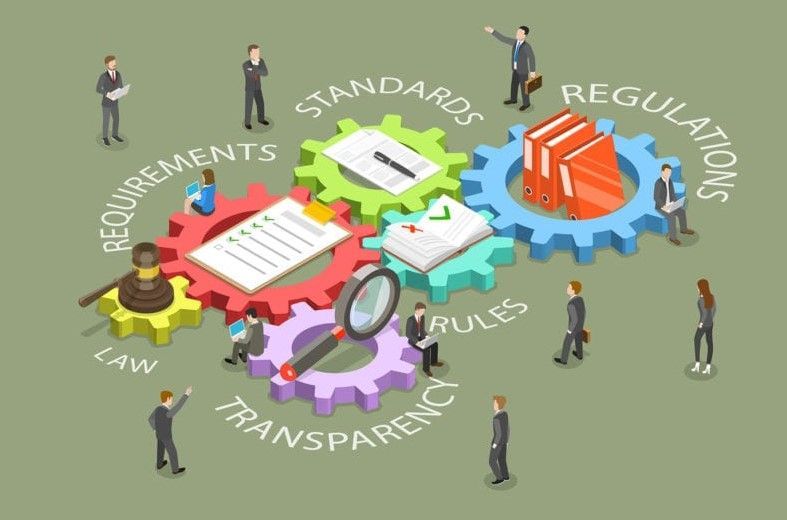Making Conflict in Sales and Marketing Productive
June 17, 2025
Healthy conflict can lead to healthy sales —if managers know how to guide the process or get help if they don’t.
Children are admonished to “play fair” and show “good sportsmanship”—and rightly so, we believe. They learn, or we hope they learn, to use these principles to guide their behavior and, at least on the playground, to reduce serious conflict.
But as adults we know there are times in business when “fierce conversations” and “healthy conflicts” are inevitable, ought to take place, and can often be critical to the success of companies, departments, and individuals. The questions are also inevitable: who, what, when, where, why, and how?
Here are some insights we’ve gained over nearly 30 years in business, thanks largely to crucial questions our clients faced and asked us to help answer. We hope they might help you think through some of your business growth challenges.
What to sell? One client’s sales force focused on selling products with a relatively short sales cycle, a price tag in the low-to-mid five figures, modest margins, and repeat purchasing year over year. Looking for better margins, management added high-end consulting services to the mix, and the sales reps became more than a little concerned. Not only would they be selling services instead of products, the consulting engagements were one-offs, cost more (low-to-mid six figures), and were driven by a much longer sales cycle.
A simmering standoff surfaced during consultative sales training we were providing with our popular FOCIS® course. The salespeople felt their steady income depended on emphasizing the lower end products and introducing the higher end service only when the opportunity looked right. Management wanted to emphasize the higher margin services.
We eventually designed a sales process for each offering. But meanwhile we stopped the training briefly because, in our view, it was critical that top management and the salespeople get on the same page. Which markets the company served and how required internal alignment for the sales training to realize its full potential.
Are top management and your sales team aligned on how much time, energy, and money should be invested in selling your various products and services? If not, your sales and marketing efforts probably aren’t nearly so efficient—and profitable—as they could be.
Who Should Sell It? Some of the most productive debates in a company occur when its direct sales force and its independent sales representatives are directed to become a business development team. We won’t deal here with strategic value of this kind of move. The rationale will be different for every company based on target market size, revenue potential, and other factors.
The traditional model is for smaller manufacturing firms to use independent reps during early growth stages. Compensation is on commission, and there is no base salary. The upside is that the arrangement controls cash outflow and ensures that sales costs are proportional to sales revenue. The downside is of course that you are sharing the rep(s) with other organizations, and you don’t know how much time is devoted to your offering.
Key Point: Direct or In-House? If you are focused on a fairly narrow target, say automotive and off-road vehicles, then you are probably best served with your own office and direct salespeople in the few cities where the OEMs are located. If you are supplying tier one and two suppliers to OEMs across the country, on the other hand, then independent reps might be more efficient. Hybrid models also exist. Part of the decision again rests on cash flow but in different way. Can top management afford to write large checks when high-dollar programs are landed? Finally, if you plan to bring sales in house once large amounts of business are rolling in, consider going direct from the beginning.
What’s Our Best Path to Growth? We were called in once by a law firm that had been debating—for several years, in fact—two questions. Should they continue their successful narrow practice focus but expand geographically by opening an office in the UK? Or should they expand their practice areas and remain in the US? We helped them design and run a process where we got everyone’s opinion (a very productive approach), helped lead discussions, and ultimately came to a decision.
“Most organizations have far too little conflict in their meetings. If your meetings are never uncomfortable, you probably don’t have enough conflict. If they are always uncomfortable, maybe your conflict is not healthy,” says Paul Detlefs, a Chicago-based certified implementer with EOS Worldwide* ( www.eosworldwide.com ). “The leader’s role is to explain why healthy conflict is good and get buy-in to that [approach], encourage and mine for healthy conflict in meetings, and model the healthy style of conflict. Great leaders do not avoid conflict or difficult conversations, because they know that [those two things] will get the team to where they need to go faster.”
Some other benefits of healthy conflict have become iconic, thanks to Patrick Lencione’s The Five Dysfunctions of a Team . His conclusions are that healthy conflict:
- Is a sign of trust and security
- Invites diverse points of view
- Surfaces potential issues
- Builds commitment
- Leads to better decisions.
Finally, we have facilitated healthy conflict discussions in a merger or acquisition when the salespeople are divided about whether to sell new and old offerings or just the ones they’re used to selling. Some acquisition investment theses, for example, count on salespeople to cover offerings from both companies. Carefully guided discussion about the pros and cons can lead to alignment. We’ve also helped investors ferret out these kinds of conflicts before making an acquisition. If time and resources allow, that’s clearly the best course.
Do you know of—or sense—conflicting sales or marketing issues ready to surface at your business? We have a process that identifies the issues, gets them on the table for everyone to see, and facilitates constructive conversations that ultimately bring alignment.
To learn more
just give us a call at 847-446-0008 Ext. 1 or e-mail pkrone@productivestrategies.
__________________________________________________________________
* EOS, the Entrepreneurial Operating System®, is a set of concepts and tools that can help entrepreneurs get what they want from their businesses. Paul Detlefs can be reached at paul.detlefs@eosworldwide.
The post Making Conflict in Sales and Marketing Productive appeared first on Productive Strategies, Inc..










